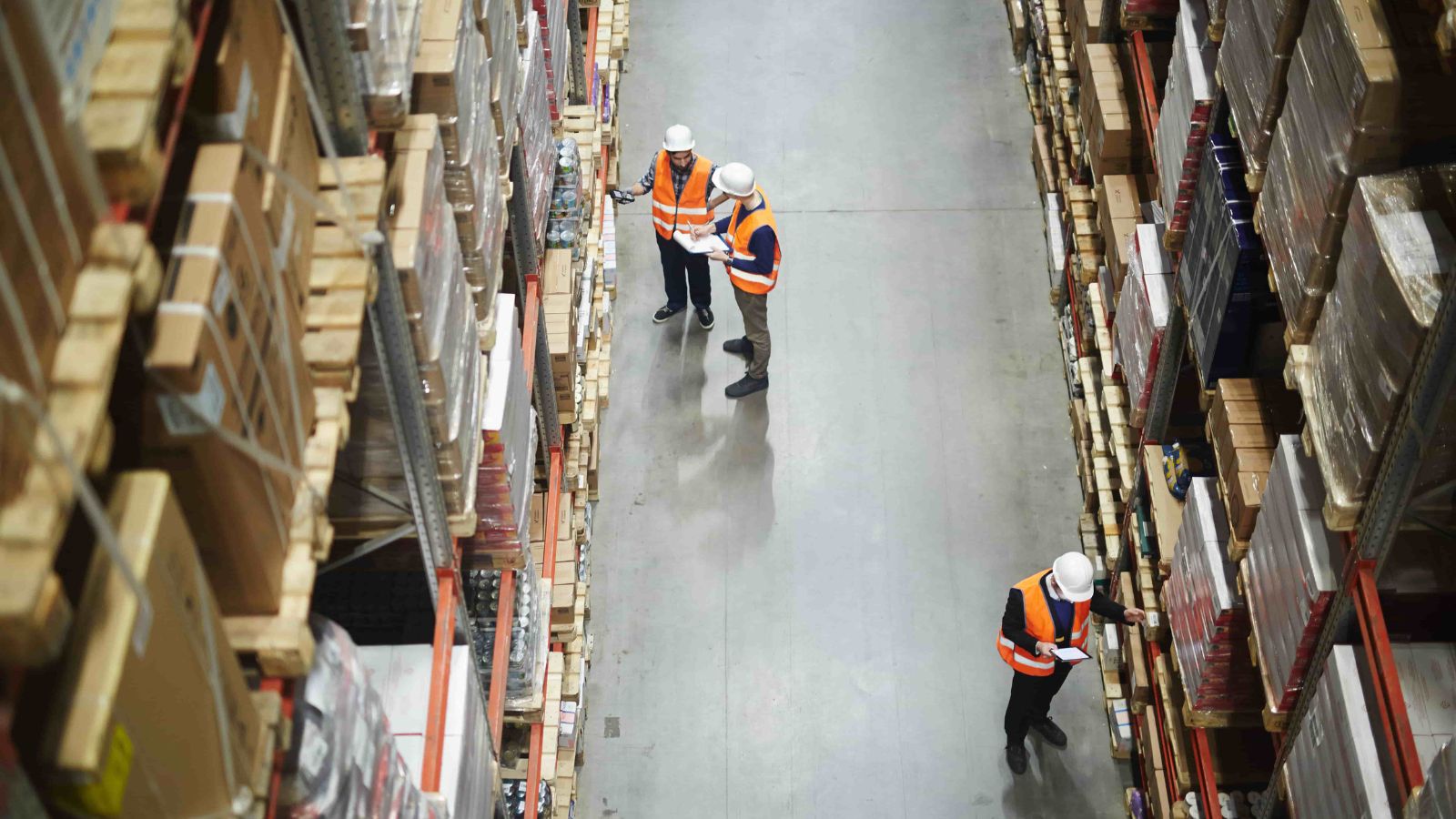The High Cost Of All-American Manufacturing

Table of Contents
Rising Labor Costs in All-American Manufacturing
The cost of labor is a significant driver of the overall expense of all-American manufacturing. Several factors contribute to this escalating cost, making it increasingly difficult for US manufacturers to compete globally.
Minimum Wage Increases and Their Impact
Minimum wage increases, while intended to improve workers' livelihoods, directly impact manufacturing costs. For example, a $1 increase in minimum wage can translate to millions of dollars in additional annual expenses for a large manufacturing plant.
- Increased production costs: Higher wages inevitably lead to higher production costs, potentially reducing profit margins and impacting price competitiveness.
- Potential job displacement due to automation: To offset increased labor costs, some manufacturers might accelerate the adoption of automation technologies, potentially leading to job displacement in certain sectors.
- Comparative analysis with manufacturing costs in other countries: Comparing labor costs in the US with those in countries like China or Mexico reveals a significant disparity, highlighting the competitive disadvantage faced by American manufacturers. The cost of labor in these countries is often significantly lower, impacting global price competitiveness for U.S. made goods.
Employee Benefits and Healthcare Costs
Beyond wages, employee benefits and healthcare costs represent a substantial portion of all-American manufacturing expenses. These benefits, while essential for attracting and retaining skilled workers, add considerable overhead.
- Rising healthcare premiums: The escalating cost of healthcare in the US places a significant burden on employers, who often bear a substantial portion of these expenses.
- Employer-sponsored retirement plans: 401(k) plans and other retirement benefits contribute to the overall compensation package, adding to labor costs.
- Paid time off: Vacation time, sick leave, and other forms of paid time off increase overall labor expenses. These benefits, while valuable for employees, directly increase costs for manufacturers.
The High Cost of Raw Materials and Energy in the US
The cost of raw materials and energy is another major contributor to the high cost of all-American manufacturing. Access to affordable resources is critical for maintaining a competitive edge.
Domestic Sourcing vs. Imports
While "Made in America" often implies using domestically sourced materials, the price difference between domestic and imported raw materials can be substantial.
- Transportation costs: Transporting raw materials across vast distances within the US can be expensive, increasing overall production costs.
- Tariffs and trade agreements: Tariffs and trade agreements can significantly impact the cost of imported raw materials, sometimes making domestic sourcing more appealing, despite higher initial costs.
- Supply chain disruptions: Unexpected disruptions to domestic supply chains can lead to material shortages and price spikes, further increasing manufacturing costs.
Energy Prices and Their Influence on Production
Energy costs, including electricity and natural gas, play a crucial role in determining the overall expenses of manufacturing.
- Energy efficiency initiatives: Investing in energy-efficient technologies and practices can help mitigate the impact of high energy prices.
- Renewable energy adoption: Transitioning to renewable energy sources, such as solar or wind power, can potentially reduce energy costs in the long run. However, the initial investment can be substantial.
- Government incentives: Government incentives for renewable energy adoption can help offset the initial investment costs and encourage wider adoption within the manufacturing sector.
Regulatory Compliance and Environmental Regulations
Strict environmental and other regulations in the US, while crucial for protecting public health and the environment, add to the cost of all-American manufacturing.
Environmental Protection Agency (EPA) Regulations
Meeting stringent EPA standards for emissions and waste disposal requires significant investments in pollution control technologies and compliance procedures.
- Compliance costs: The cost of complying with EPA regulations can be substantial, requiring investments in new equipment, specialized training, and ongoing monitoring.
- Potential penalties for non-compliance: Failure to comply with EPA regulations can result in hefty fines and legal repercussions, adding further financial burdens on manufacturers.
- Investment in pollution control technologies: Implementing advanced pollution control technologies represents a significant upfront investment, but is often necessary to comply with regulations.
Other Federal, State, and Local Regulations
Beyond EPA regulations, manufacturers face a complex web of federal, state, and local regulations impacting labor laws, safety standards, and taxation.
- Bureaucracy: Navigating complex regulatory frameworks can be time-consuming and expensive, adding administrative burdens to businesses.
- Permit applications: Obtaining necessary permits and licenses for operations can be a lengthy and costly process.
- Inspections: Regular inspections to ensure compliance with regulations add to the overall cost of operation.
Technological Advancements and Automation Costs
While automation offers the potential to reduce labor costs and improve efficiency, the initial investment and ongoing maintenance costs can be substantial.
Investing in Automation to Reduce Labor Costs
Implementing automation technologies often involves a significant upfront investment in robotics, software, and other advanced machinery.
- Return on investment (ROI) analysis: Careful ROI analysis is crucial to determine the long-term cost-effectiveness of automation investments.
- Potential job displacement: Automation can lead to job displacement, requiring retraining programs and potential social safety nets to support affected workers.
- The cost of training employees on new technologies: Training employees to operate and maintain automated systems requires investment in training programs and skilled labor.
Maintaining and Upgrading Advanced Machinery
Automated systems require ongoing maintenance and upgrades to ensure optimal performance and prevent costly downtime.
- Maintenance contracts: Maintenance contracts with specialized providers can ensure timely repairs and prevent costly breakdowns. However, these contracts represent an ongoing expense.
- Software updates: Regular software updates are necessary to maintain system security and functionality, adding to the overall maintenance cost.
- Skilled labor required for maintenance and repairs: Maintaining and repairing advanced machinery requires specialized skills and training, demanding higher wages for skilled technicians.
Conclusion
The high cost of all-American manufacturing is a complex issue stemming from rising labor costs, expensive raw materials and energy, stringent regulatory compliance, and substantial investments in automation. These factors combine to reduce the competitiveness of US manufacturers in the global market, potentially leading to job losses and higher prices for consumers. Understanding the high cost of all-American manufacturing is crucial for fostering a sustainable and competitive domestic industry. Let's work together to find innovative solutions and support policies that reduce these costs and strengthen the future of All-American manufacturing. This requires a multi-faceted approach, including exploring innovative manufacturing processes, streamlining regulations, and investing in workforce development and training. Only through such collective efforts can we ensure the continued success and prosperity of American manufacturing.

Featured Posts
-
 Capital Summertime Ball 2025 Tickets A Maldon And Burnham Standard Guide
Apr 29, 2025
Capital Summertime Ball 2025 Tickets A Maldon And Burnham Standard Guide
Apr 29, 2025 -
 Adhd Medisin Og Skoleprestasjoner Funn Fra Fhi
Apr 29, 2025
Adhd Medisin Og Skoleprestasjoner Funn Fra Fhi
Apr 29, 2025 -
 The Illusion Of Intelligence Unveiling The Reality Of Ais Thought Processes
Apr 29, 2025
The Illusion Of Intelligence Unveiling The Reality Of Ais Thought Processes
Apr 29, 2025 -
 Search Intensifies For Missing British Paralympian In Las Vegas
Apr 29, 2025
Search Intensifies For Missing British Paralympian In Las Vegas
Apr 29, 2025 -
 Wife Of Willie Nelson Addresses Medias False Narrative
Apr 29, 2025
Wife Of Willie Nelson Addresses Medias False Narrative
Apr 29, 2025
